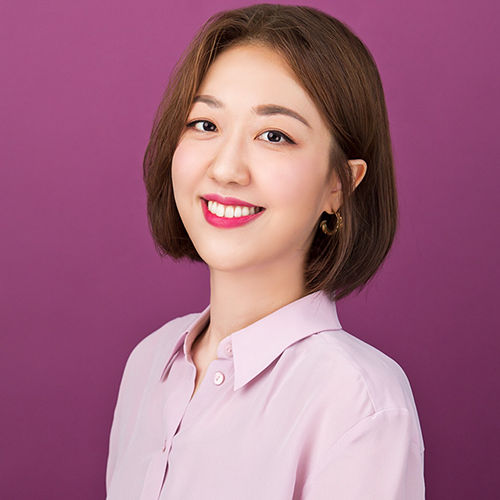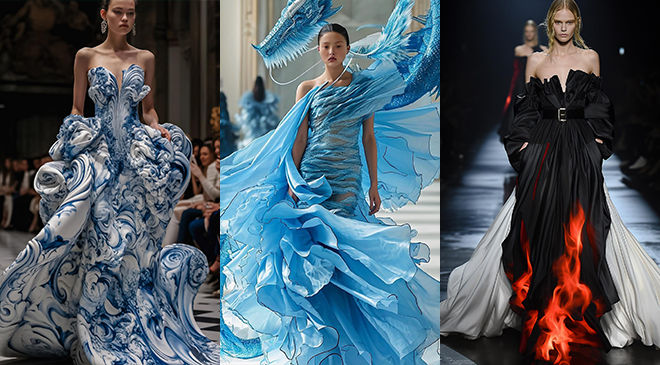
Hera Kim
Founder
Tinker Tailor
Visual fantasy is the essence of Tinkertailor
Hera Kim is a multifaceted artist whose work spans floristry, visual direction, and AI art, deeply inspired by her fascination with Greek and Roman mythology, Renaissance culture, and her upbringing in a German florist family. Her creations aim to fuse art with technology, embodying the spirit of the Renaissance to bring joy, enchantment, and fulfilment to people’s lives through innovative designs in flowers, weddings, and AI-driven projects. In an interview with Fibre2Fashion, Kim discusses her journey where innovation and artistry converge, and where every project serves as a testament to boundless creativity.
Fibre2Fashion: How has your upbringing and family background influenced your artistic journey?
Hera Kim:
Thanks to my mother, a certified German florist master, I've lived almost my entire life immersed in floristry. I earned my first florist certification at age 10, and since then, floral arrangements have been my passion. Growing up, my mother's focus on artisan-style weddings exposed me to the intricacies of wedding décor. Conversely, my father, an optician with an engineering background, instilled in me a fascination with machinery. From a young age, I enjoyed fixing and assembling machines.
F2F: Where do you find inspiration for your immensely creative designs?
HK:
My answer is always ‘flowers’. Being a florist my entire life, they have become an integral part of who I am. Even now, as an AI designer, I'm constantly surrounded by flowers and engage in flower arranging weekly. I draw inspiration from the colours, organic shapes, and even the scientific principles behind flowers, such as Fibonacci numbers. Additionally, Greek mythology is a significant influence, as I was named after the Greek goddess Hera. Thanks to my name, I've been fascinated by Greek myths since childhood, frequently reading books and visiting museums to learn more.
F2F: Can you share a specific moment or experience that ignited your passion for designing?
HK:
A pivotal moment that sparked my passion for design happened during periods of psychological distress. Surprisingly, I discovered that experiencing emotional pain, whether personal or social, often acted as a catalyst for my creative inspiration. I observed how turmoil transformed into a fervent drive for design, especially in AI-generated artwork. Some of my most acclaimed pieces, featured in prestigious magazines or successful competitions, originated from moments of emotional turmoil. Adversity, it seems, possesses the remarkable ability to fuel creativity, leading to the creation of impactful and powerful designs.
F2F: What specific AI techniques or tools do you utilise to generate ideas for your collections?
HK:
The primary AI tool I rely on for generating ideas for my collections is Midjourney. Initially drawn to its familiarity and appealing aesthetic, I have experimented with other tools like DALL-E and Stable Diffusion, but found Midjourney resonates with me the most. Additionally, I incorporate RunwayML into my workflow, enabling the creation of images to video—a perfect fit for showcasing my motion graphics and enhancing the visual experience of my collections.
F2F: Have you encountered any challenges in achieving personalisation and customisation through AI, and if so, how have you addressed them?
HK:
I am accustomed to turning to the internet whenever I encounter curiosity or confusion, seeking answers and studying relevant knowledge. Enjoying independent learning, I have faced challenges in achieving personalisation and customisation through AI. However, by documenting issues and finding solutions through online searches, I have overcome obstacles and expanded my knowledge. AI's ability to rapidly generate images has enabled experimentation and problem-solving based on the information I have gathered.
F2F: Can you describe the dynamic between you and the AI system during the design process?
HK:
In AI-involved design processes, there's a collaborative relationship between the human designer and the AI system. The designer provides input, guidance, and instructions, specifying project goals, parameters, and constraints. The AI system processes this input, leveraging algorithms and data to generate design solutions or assist in various aspects. This dynamic is iterative and symbiotic: the designer evaluates AI outputs, provides feedback, and refines instructions, while the AI system learns from feedback to produce improved iterations.
F2F: In what ways do you believe AI can positively impact the fashion and design industry, and are there any potential drawbacks you're wary of?
HK:
I believe AI will have a positive impact on the fashion and design industry. AI can enhance artistic creativity and increase productivity by saving time. For instance, using AI to predict fashion trends and analyse consumer preferences enables companies to develop more accurate products and improve marketing strategies. Additionally, AI can personalise the design process and assist in producing customised products. Nevertheless, it is important to consider some precautions when utilising AI. For example, inherent biases in AI models or distorted data can undermine the quality of products or services. Moreover, human creativity and intuition are aspects that AI cannot fully replace; excessive reliance on AI may diminish innovation and originality. Therefore, it is important to utilise AI appropriately and be aware of its limitations.
F2F: How do you define ‘visual fantasy’, and why is it important in your work?
HK:
Visual fantasy is defined as the manifestation of dreams and imagination in a visual form. In my work, it holds significant importance as it encapsulates the essence of Tinkertailor, my company, which was founded with the motif of fairy tales. Similar to how fairies bring dreams to life, our company's mission is to make people's dreams tangible through visual storytelling. The combination of ‘tinker’ and ‘tailor’ underscores our commitment to crafting and bringing to life the fantastical visions of our clients, emphasising the importance of the keyword ‘visual fantasy’ in our creative endeavours.
F2F: Are there any upcoming projects or collaborations that you're particularly excited about?
HK:
Absolutely, I am incredibly excited about an upcoming collaboration with a cosmetic company, although I am unable to disclose its name due to confidentiality agreements. This partnership holds special significance for me as it involves a company that I've long admired. As we're still in the preparatory phase, the prospect of collaborating feels like a dream come true. What's fascinating is that despite my previous focus on the wedding industry, as an AI designer, I'm now presented with opportunities across various sectors. From fashion and retail design to wedding and product design, the range of inquiries I've received knows no bounds, mirroring the expansive nature of my vision and aspirations.
F2F: How do you navigate issues such as bias or lack of diversity in AI-generated designs?
HK:
I pay attention to the data used for training the models to address issues such as bias or lack of diversity in AI-generated designs. Obtaining diverse and representative training data contributes to mitigating biases. Continuously monitoring and evaluating the model's outputs allows for the identification and correction of any biased patterns that may emerge. Converging opinions from various perspectives is crucial in improving AI-generated designs to be more inclusive and reflective of diverse experiences and cultures.
F2F: How do you envision the relationship between human designers and AI evolving in the future?
HK:
In the future, the collaboration between human designers and AI is expected to strengthen further. Human designers excel in creativity and emotional elements, while AI demonstrates rapid data processing capabilities. Combining these two strengths is anticipated to enable remarkable designs and innovations. AI can take over repetitive and time-consuming tasks, allowing designers to focus more deeply on creative endeavours. This complementary and coexistent relationship is expected to enhance productivity and foster a synergistic partnership between human creativity and AI efficiency.
F2F: Have you ever been surprised or inspired by the suggestions or creations generated by AI?
HK:
Absolutely, I'm continually surprised and inspired by the suggestions and creations generated by AI. Despite providing input and studying the patterns of its work, the rapid pace of AI development never fails to astonish me. With each system update, it's like encountering a whole new AI entity, and the introduction of features like deep learning adds to its fascination. Witnessing how well the AI understands my preferences and visual fantasies is particularly intriguing, especially as it becomes more adept with each training session. At present, Midjourney stands out as the most reliable assistant for me, consistently exceeding my expectations with its capabilities.

Aseem Prakash
Pradip Mehta
Rahul Mehta
Gabi Seligsohn
Abhay Gupta
Arun Sirdeshmukh
Bill D’Arienzo
Rahul Mehta
Anurag Batra
Fanny Vermandel


20230103183907.png)


_8.JPG)







